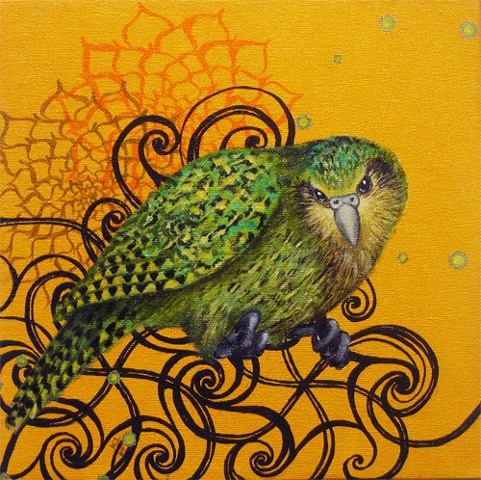Animals
“More than 150 Bird species are known or suspected to have disappeared since 1500, almost entirely because of human activity, and the process continues today: wild populations of at least 17 species were lost in the quarter of the 20th century. There is no road back for the Guam flycatcher (Myiagra freycineti), devoured by alien tree snakes, and no second chance for the Columbian grebe (Podiceps andinus), a victim of wetland loss, pollution, over hunting, and predation by introduced trout.
Extinction officially threatens 1,211 species – roughly one in eight of all birds. Of these globally threatened birds (GTBs), 179 are critically endangered. They stand at the brink of oblivion because of rapid declines or dismally small populations or ranges. An estimated 77 species are represented by less than 50 individuals, rendering them very vulnerable to environment fluctuations and catastrophes, to demographic vagaries (one year, perhaps, most offspring might be male), and to a variety of social and genetic disruptions. At last count there were 10 pairs of Tahiti monarch (Pomarea nigra) in French Polynesia and 12 wild Bali starlings (Leucopsar rothschildi). Time may have run out on Hawaii’s po’ouli (Melamprosops phaeosoma) when the last individual in captivity died late last year and the two in the wild haven’t been seen for some months. Taking into account this overcrowded emergency ward of ailing species, and given the time lag between habitat loss and extinction, a sizable proportion of the world’s birds may be living on borrowed time.
But extinction is only part of the story. Even if extinction is averted, a world full of rare birds, clinging to existence in captive breeding facilities and pockets of protected habitat isolated in an overpopulated, intensively cultivated, industrialized landscape, is hardly cause for celebration. Unfortunately, there are plenty of signs that such a world looms before us. “
- Listening to the birds : State of the wild 2006 Tobias, Bennun, Stattersfield
The case in a nutshell: The kakapo is the only flightless and nocturnal parrot in all of the world. They are also the heaviest parrot, weighing in at about 8 pounds. “Kakapo” means “night parrot” in Maori and it’s scientific name means “owl-like.” They live in New Zealand and burrow their nests into the ground. For thousands of years, New Zealand had no mammals until the first human settlers brought with them rats and other small creatures that hunted the kakapo’s eggs. Now if that wasn’t enough, the kakapo was hunted for it’s feathers which are beautiful and unique as well as for a tasty meal. The first Europeans thought the bird was the least developed parrot (which didn’t help in their slaughter). Because they are flightless of course, they are easy target for anyone or anything trying to hunt them which has been only in the last several hundred years of the many many thousand they have been around.
There are now only about 62 Kakapo left on the planet. Thanks to some conservation and breeding efforts, the kakapo is not extinct, but it’s species is just barely hanging on. This is truly a unique and amazing creature. Can we really forgive ourselves if we let another species disappear due singly to our actions?
One of many solutions we can help with: There are a few organizations that help the severely endangered kakapo through conservation efforts in their homeland as well as individual rescue operations. You can donate to them to make the most difference. I have listed a few below.
Personally, you can also just tell people about the kakapo and what a remarkable creature it truly is. Education and awareness is half the battle and the more people know the kakapo exists and it tragic plight, the more interest there will be in saving him.
-New Zealand Department of Conservation Te Papa Atawhai
-Camalco
-Kakapo Rescue
